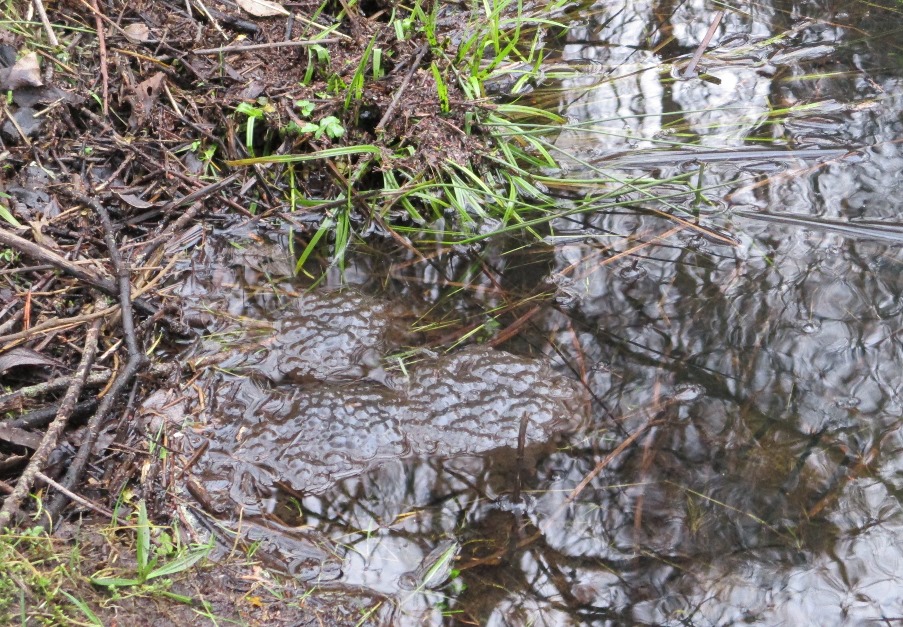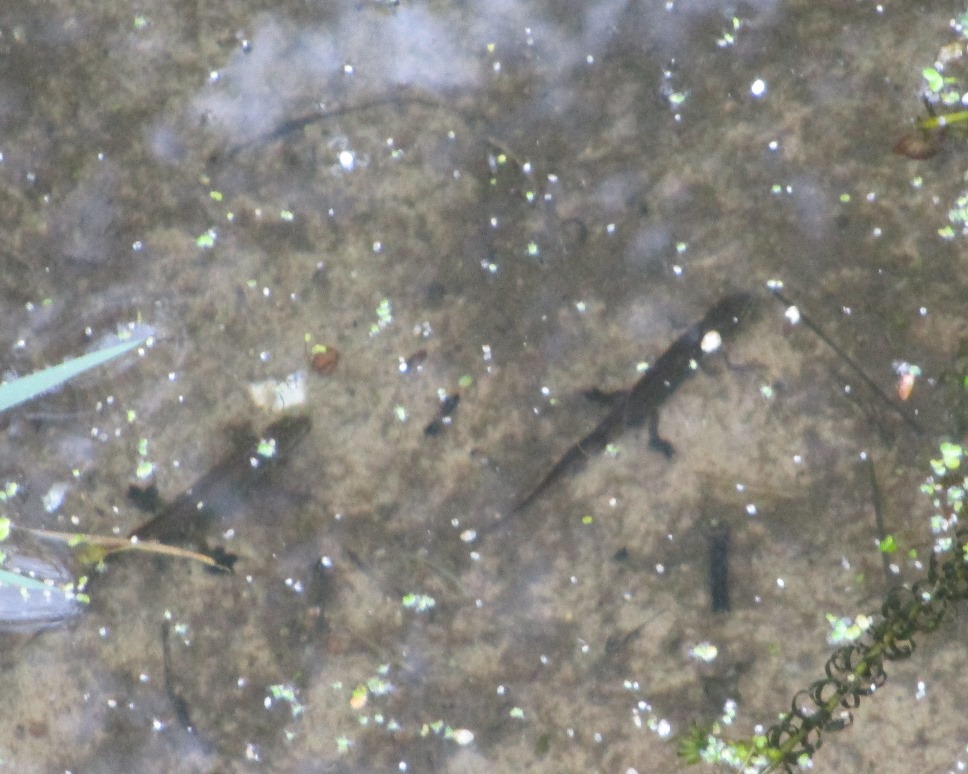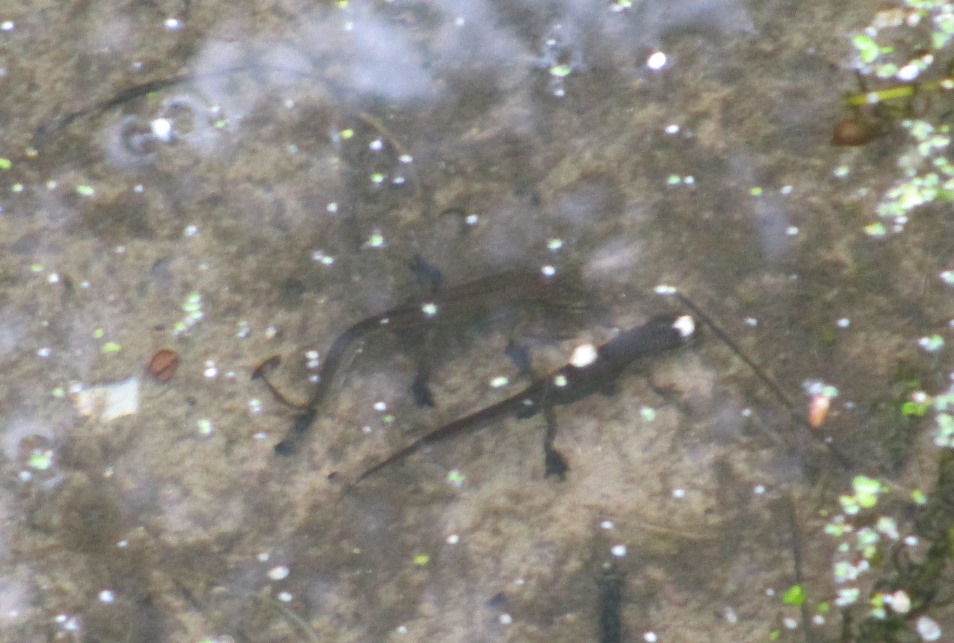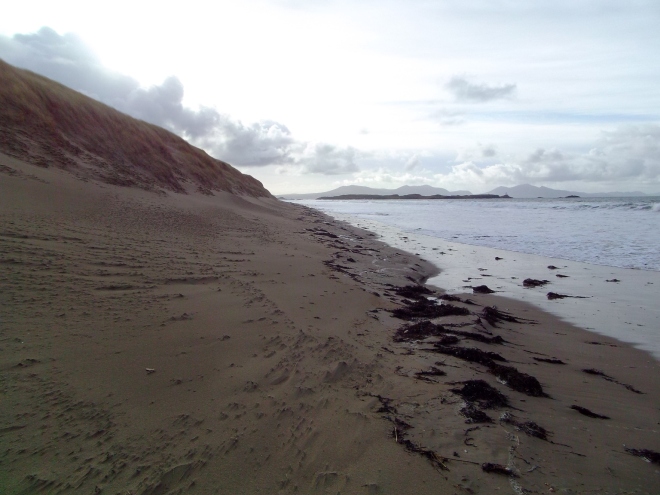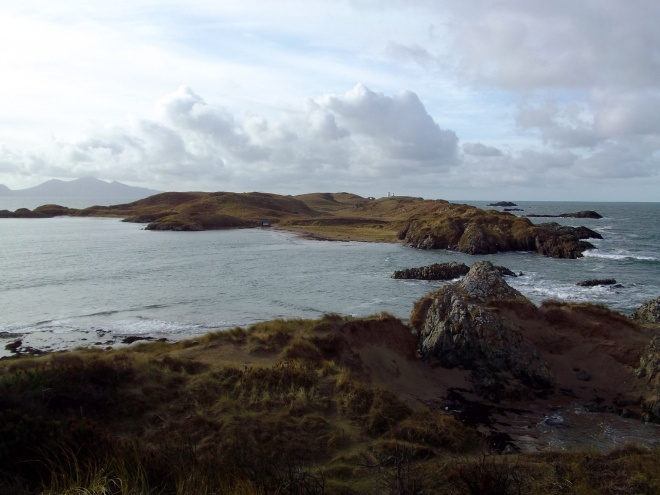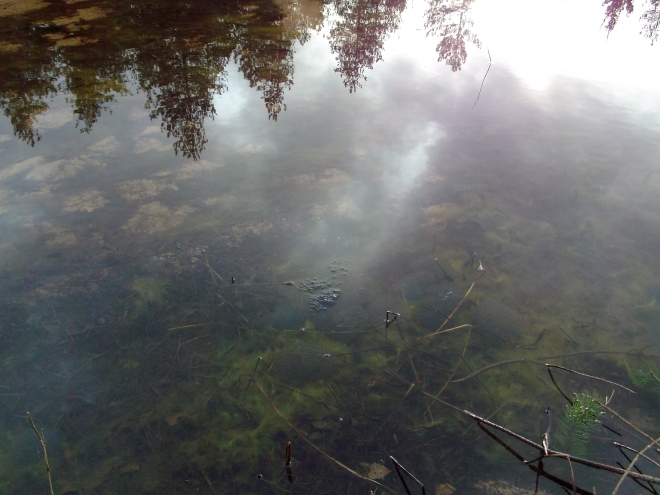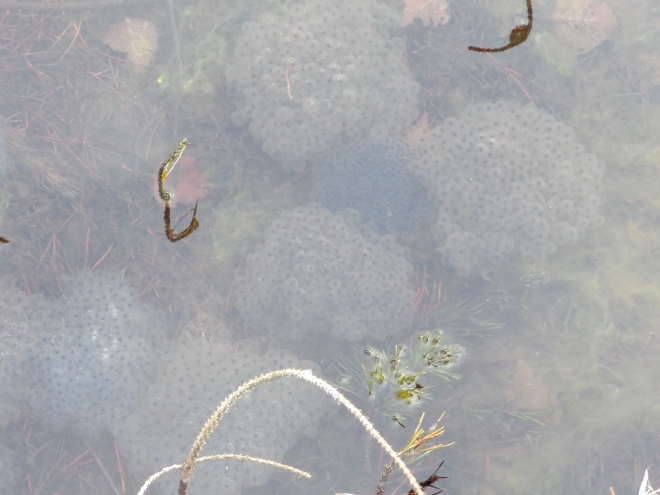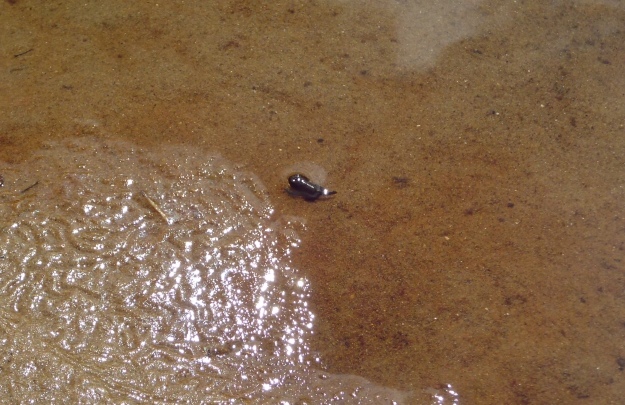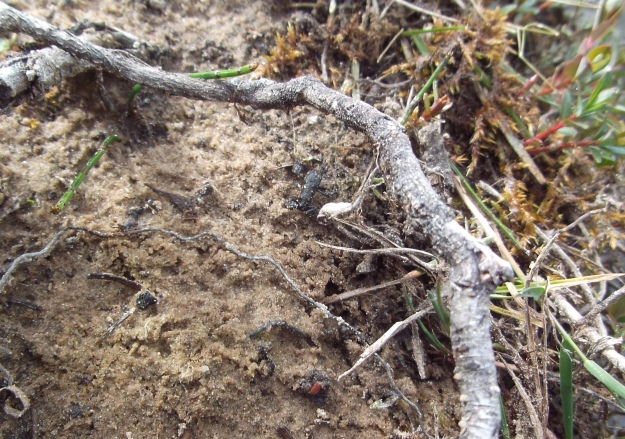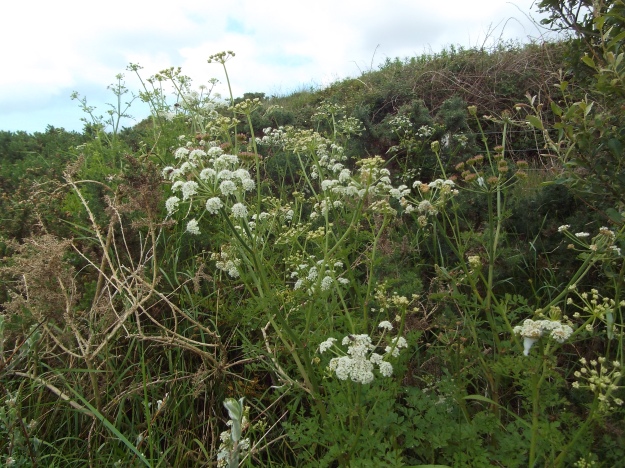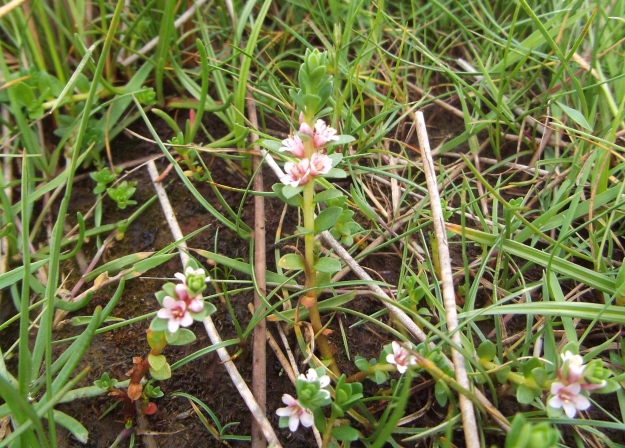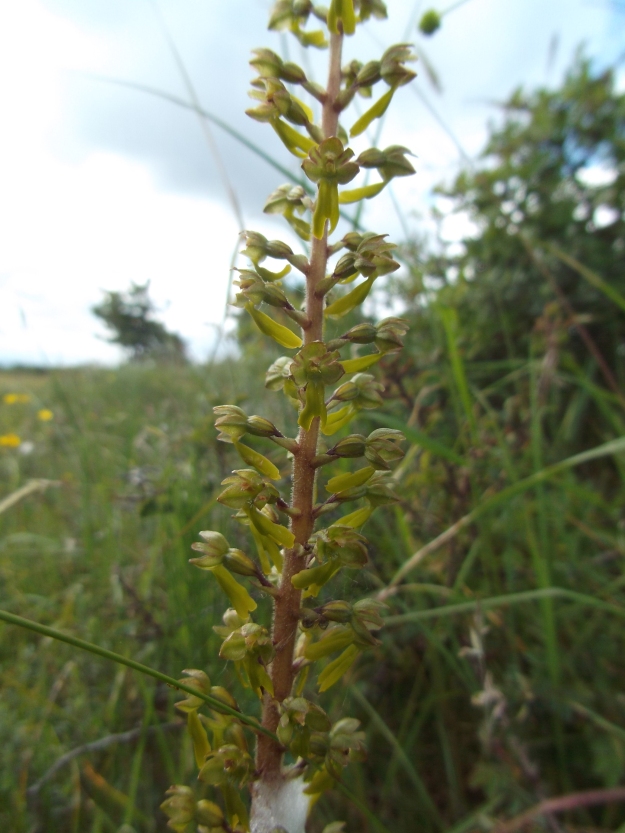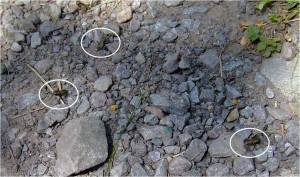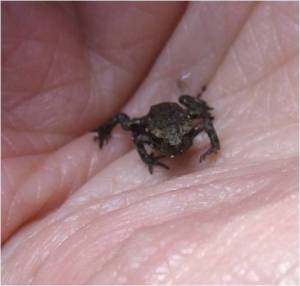Lately you may have noticed orange topped bamboo canes popping up throughout the forest. Or you may have seen hazard warning tape, or just seemingly random patches of dead vegetation.


Mainly, these markers are showing where Natural Resources Wales’ contractors will be or have been spraying herbicide to try and kill the montbretia/crocosmia.

Inevitably, despite careful application, the pesticide is also getting on to the surrounding plants and especially the brambles / mwyar duon / blackberries which are just coming ripe now. So, if you don’t want a dose of pesticide with the fruit you pick, best to avoid any of these areas.
There are, of course, questions about the appropriateness of using herbicides in this way – especially for a corm forming plant. But there are also questions about the additives used to ensure the herbicide works: the surfactants which dissolve the leaves’ waxy coatings, also dissolve the waxy coatings on the skin of anything else they touch, most especially amphibians.
The frogs, toads and newts at Newborough are already having a tough time, with the declining water quality and extensive disturbance in NRW’s habitat “improvement” schemes here. This year, I have seen fewer frogs, toads or newts than any previous year. And it is ironic that the toad I saw near the treated montbretia had suppurating ulcers on its back. Probably (possibly) that is nothing to do with the herbicide applications, but it did make me wonder…

